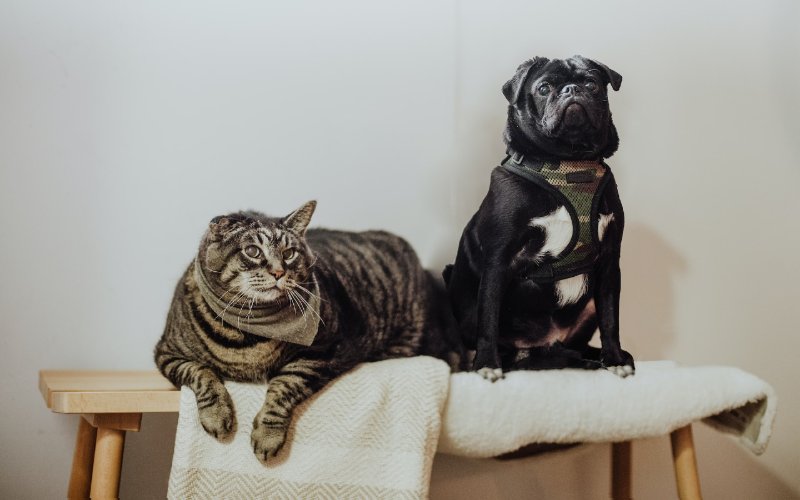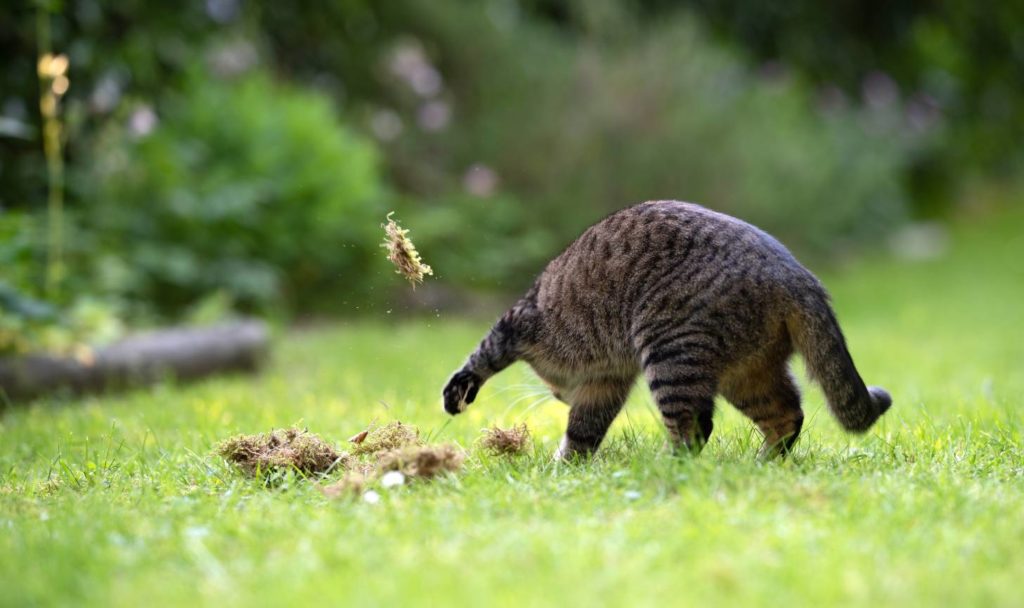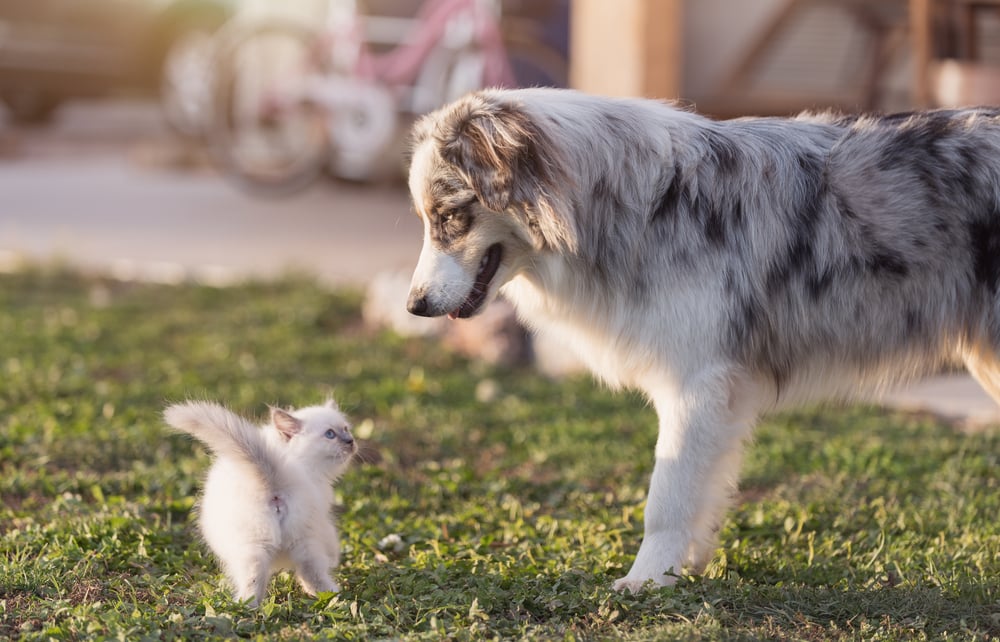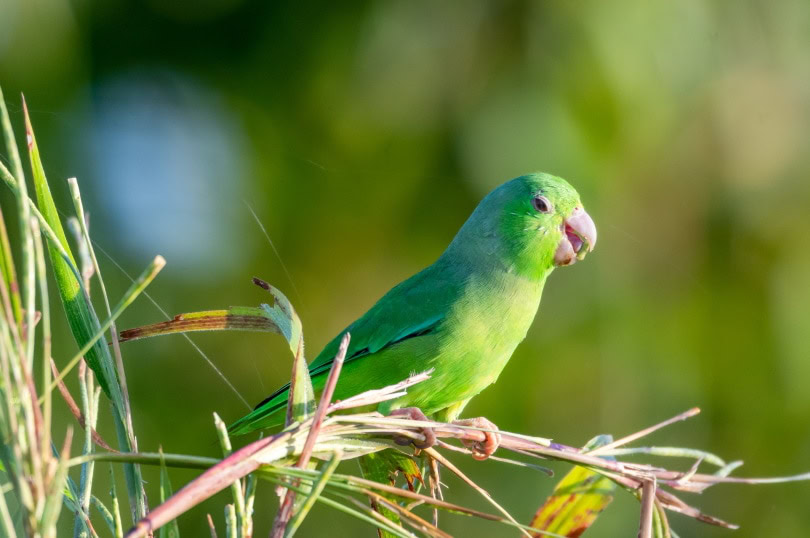VET APPROVED

The information is current and up-to-date in accordance with the latest veterinarian research.
Learn more »Click to Skip Ahead
We see it in literature, on TV, and in cartoons. A lot of the things we seem to read about cats and dogs suggest their innate dislike for one another. But is it true? In reality, much of it depends on whether the two animals have been properly socialized from an early age, their individual temperaments, and whether they’ve had any negative experiences with the other species. Here are some of the myths related to this misunderstood relationship between the two species, as well as factors influencing the success of their relationship.

The Prey-Predator Relationship
Both dogs and cats are predators. A fleeing animal is sure to trigger these instincts, whether or not it’s appropriate. While felines are closer to their wild side, some canines have a keen prey drive. A cat relies on speed and stealth to survive. Many dogs that haven’t been socialized properly around cats have the instinct to chase them, with the majority of cats running away at the sight of a dog approaching, while some cats may show fearlessness in the presence of dogs.
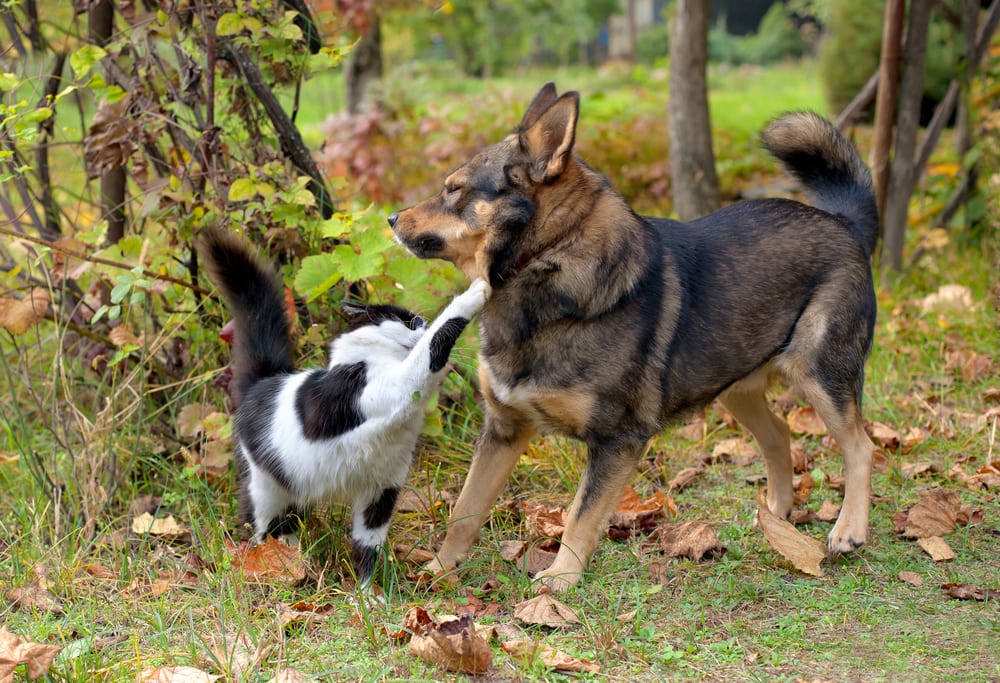
Competitors
Before becoming pets, both wild dogs and cats used to hunt and scavenge for a living, especially close to human settlements where food waste and prey animals were plentiful. That could potentially make the two species competitors if food sources are scarce.
Different Social Structures
Cats and dogs may operate on different social structures, although in both cases, the relationships can be quite complex. Stray cats may form social groups around a food source, especially mothers with their kittens, but their social behavior is quite flexible and will depend on many factors, such as body size, social rank, individual temperament, age, relationship within the group (kin/familiar), sex, level of human caretaking, presence of food, health, and sexual status. Stray dogs may form a more stable pack than feral dogs, who are more often solitary scavengers and join a pack for short periods of time. Wild dogs like dingos do form packs of 3-12 animals, depending on food sources, centred around a breeding pair. Canine and feline behaviors are quite complex and do not fall under simple categories, depending on whether the animals are truly feral, stray, wandering, or owned.
The two species also communicate quite differently and have differing body languages. A dog wagging their tail wants to play. A cat is more often swishing their tail as a warning. However, despite the obvious differences, the two animals can get along well if they have been socialized properly from a young age and introduced correctly.
Socialization
Inability for some cats and dogs to get along might have more to do with something that happened before they met than with the actual relationship or general species differences. Puppies go through a fear period at around 8 weeks old, with early socialization from 3-14 weeks of age. Negative experiences at this time, as well as a lack of interaction with other people and animals, could spell a lifetime of undesirable behavior. Crucial periods in socialization with a second fear period continue until the puppy is around 12-14 months old.
Likewise, a puppy separated from their mother and littermates before 8 weeks old is more likely to have behavioral issues due to lack of proper socialization. However, cats aren’t off the hook. Some breeds have inherent personality differences and even a predisposition for fearfulness, depending on socialization.
For example, research has shown that Russian Blues are the most fearful, while Abyssinians are the least fearful. The study also found that the Turkish Van is the least sociable among the breeds, but this will also greatly depend on the individual cat’s temperament and early socialization.
The relationship with dogs could have been doomed from the start, depending on the early experiences of both animals.
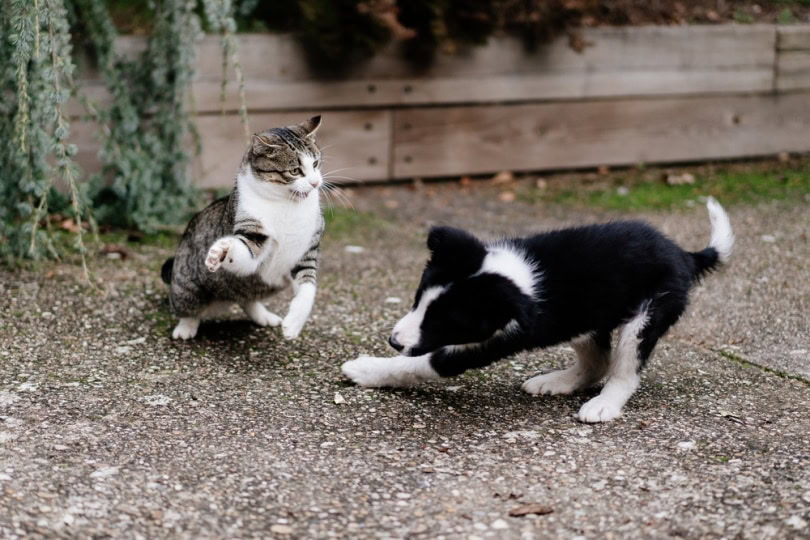
Varying Schedules
Let’s face it, many of us aren’t necessarily very social when we first wake up in the morning. And you probably don’t like being woken up unexpectedly. Those same things might factor into a less-than-harmonious relationship between some cats and dogs, although for most, it won’t pose a major issue. The former is crepuscular and can sleep up to 16 or more hours daily, much of this being spread throughout 24 hours. Cats are most active at dawn and dusk and will have periods of activity throughout the day and night, depending on their routine, combined with sleeping.
Dogs may snooze for 10-18 hours, depending on their age, lifestyle, and health. They’re more likely to be active during the day when their owner is around and taking them for regular walks, and sleep throughout the night. Although these schedules have their similarities and differences, cats and dogs living in the same home often find a way to complement each other’s routines without much trouble, as long as both pets are able to exhibit their natural behaviors.
Genetic Factors
We mentioned the different personalities of cats. It also occurs in dogs. How much activity and exposure to new things will affect how welcoming a pup is to new experiences like meeting a cat, will greatly depend on their temperament, working group, and early socialization.
Remember that humans and dogs have a much longer relationship than we have with cats. Canines were selectively bred for specific tasks, such as guarding or hunting. These breeds may be more likely to chase a cat due to their instinctive traits.

Tips for Helping Your Pets Get Along
We recommend introducing your cat and dog slowly, especially if it’s the first time either animal has met the other. If your dog usually tries to chase cats or has shown aggression toward them in the past, it would be best not to get a cat in the first place. Make sure you are confident that your dog’s personality and sociability will be appropriate for getting a feline, and seek veterinary or behaviorist advice before proceeding with introductions.
Scent exchange is the first step in getting each animal used to the other’s scent and presence, without them being able to see each other. Keep them in separate areas of the home for a few days, until they are both relaxed and calm around each other’s scent and happy to take treats and food.
A pet gate or a glass door between the two is an excellent way to start things off while keeping them separated in case things go sour. Safety is the most important thing. If either one seems stressed or fearful, stop the meeting and let them settle down before trying it again another time. Always keep your dog on a leash so they can be restrained if necessary, while the cat can be let loose, with plenty of available hiding places and high-up spots, where they can’t be reached by the dog, in case they get spooked. Ideally, keep the dog close to you and offer treats to reward their calm and composed behavior, while the cat can decide if they want to approach any closer. Keep these interactions only a few minutes long and repeat them several times per day, offering treats to both pets to reinforce their relaxed behavior. This way, they will learn that good things happen when they are together.
If one or both animals show fear or uncertainty, stop their interactions and give them a break. In case of any unwanted reactions, such as hissing or attempts at swiping from the cat, or growling from the dog, distract your cat and dog with a loud or unexpected sound, such as a whistle. Do not yell or try to scare them, as this could have negative effects on their relationship. Try to use toys to take their mind off one another and distract them, and it’s best to use a helper who can distract the cat while you play with the dog. That will turn their attention elsewhere while keeping them both safe. Avoid introducing too many resources at this time, as this may make the dog want to guard them, especially in the case of food or the dog’s favorite or new toys.
Give the pets plenty of time to slowly get used to being in the same room without being forced to interact. The dog can be in a crate or on a leash. Be patient, as these things could take weeks or months. However, don’t be disappointed if they don’t become bosom buddies. The best you can hope for is a peaceful alliance where each respects the other’s space.
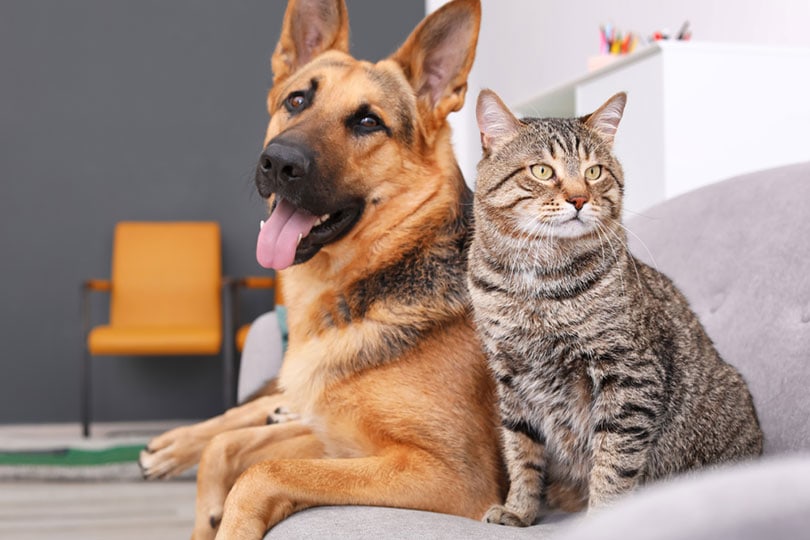

Conclusion
Cats and dogs seem to have a few reasons not to get along, but oftentimes they do find a way with a lot of time, patience, and supervision. Genetics, early socialization, previous experiences, and temperament, as well as improper introductions, can make things difficult in some cases. However, it’s not impossible. It’s best to introduce the two when they’re young and impressionable. A positive experience as kittens and puppies can lay the groundwork for a loving relationship between the two. Going slow is the key to making it happen.
Related Reads:
- We Didn’t Domesticate Dogs. They Domesticated Us.
- A Puppy Growth Timeline: Transitions in Puppyhood – American Kennel Club
- factors associated with acquiring a puppy under eight weeks of age and without viewing the mother – Kinsman – 2020 – Veterinary Record – Wiley Online Library
- Reliability and Validity of Seven Feline Behavior and Personality Traits
- Breed differences in canine aggression – ScienceDirect
- Why are small dogs so fierce? | Live Science
- Active and social life is associated with lower non-social fearfulness in pet dogs | Scientific Reports
- Fearfulness associates with problematic behaviors and poor socialization in cats – ScienceDirect
- Why Do Dogs Sleep So Much? PETMD
Featured Image Credit: Priscilla Du Preez, Unsplash
